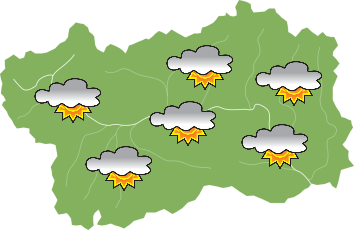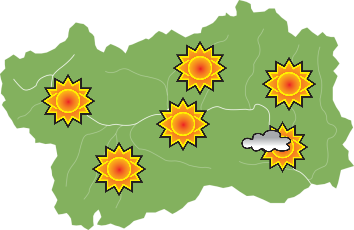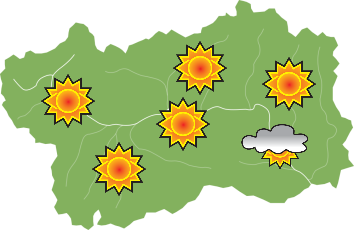In a very urbanised environment, the traces of a Roman bridge dating back 2000 years are the only precious visible testimony of the ancient bed of the Buthier river. The river, an important tributary of the Dora Baltea, to which it lent its name, now flows near the Arch of Augustus, but up until the 11th century it flowed with a single bed under the Stone Bridge. The city of Aosta develops on the distal section of the large fan of the Buthier river in convergence with the Dora Baltea. From the Roman presence up until the late Middle Ages, the river flowed, with a single bed, under the “Ponte di Pietra”. On an unknown date, which is thought to be prior to the year 1000, following a serious flood, a diversion of the river caused the subdivision of the riverbed into two branches. Documents from the 11th-13th centuries certify the existence of two separate rivers, each of which had a bridge: “lapideus” the Roman one and “ligneus” the more recent one, situated around one hundred metres further west, near the Arch of Augustus.
In a print dated 1682, showing the city of Aosta, we can see that the canal with the largest capacity flowed under the wooden bridge (which has now been replaced by a modern bridge), while under Ponte di Pietra there was only a modest stream. Around 1850, the historian Aubert discovered that the section of riverbed under the Roman bridge was three quarters full of flood debris. Water definitively ceased flowing under the bridge around the first decades of the 20th century. The Roman Bridge, which ceased its function as a link, remains as a testimony of the extraordinary engineering art of the Romans and an evolutionary moment in the route of the Buthier river. The ancient riverbed, near the bridge, was transformed into a green area to be used as a public garden, where there are stones and round and smooth masses, which perhaps once belonged to the old river. The span of the bridge is partially obstructed by a wall that supports a brick terrace. Behind the bridge, the area is completely built-up and there are no recognisable traces of the historical branch of the Buthier river.
How to get there:
You can reach Aosta city either through the S.S. 26 or via the motorway. Arriving from Turin, once you have surpassed the commercial area, follow the signposts for the city centre. Having passed the state road through an underpass, you will reach Corso Ivrea directly. It is possible to park in Via Monte Emilius.
TECHNICAL NOTES
Altitude: 500 m above sea level
Overall duration of the tour: 20 minutes.
Recommended period: All year round
Itinerary:
The geological site is located in Aosta city, coming from the centre of Aosta, go in the direction of the Arch of Augustus and as far as corso Ivrea, the street immediately below the Arch, the bridge and the old riverbed are 100 metres after the first traffic light on the left.










